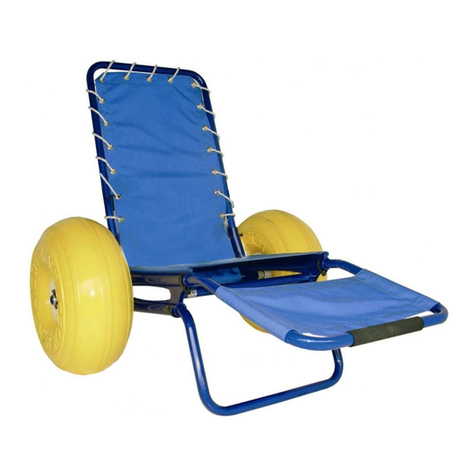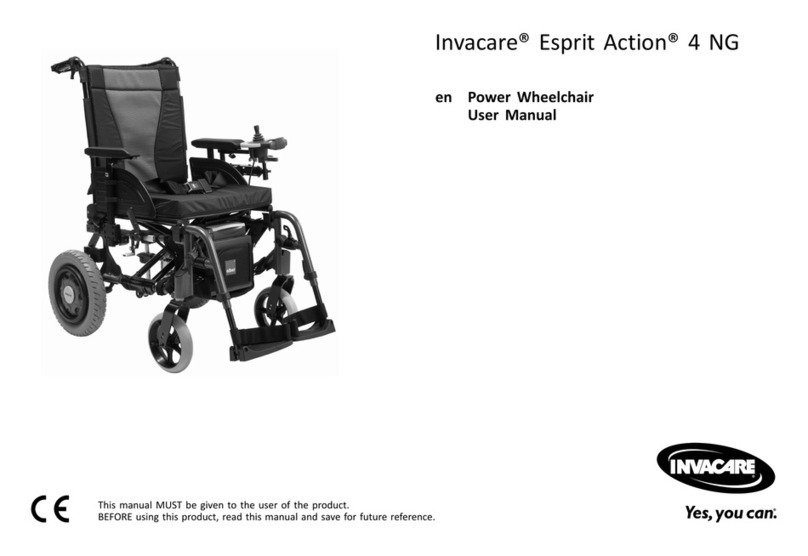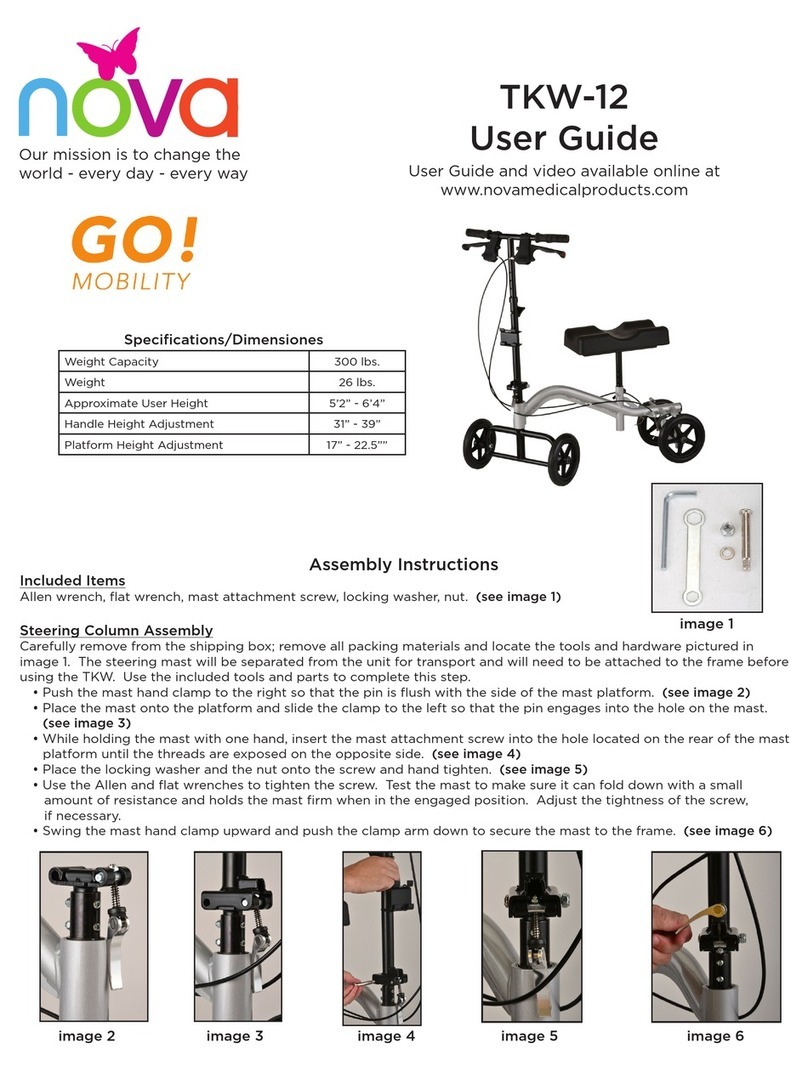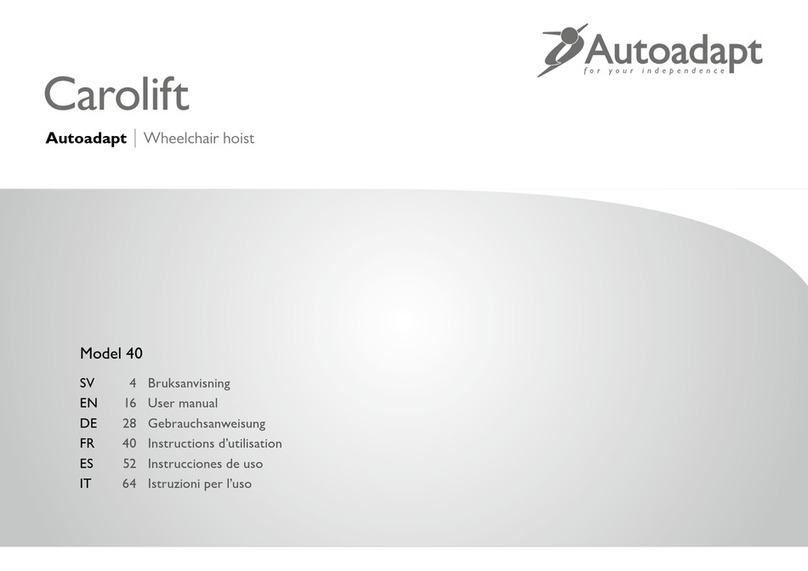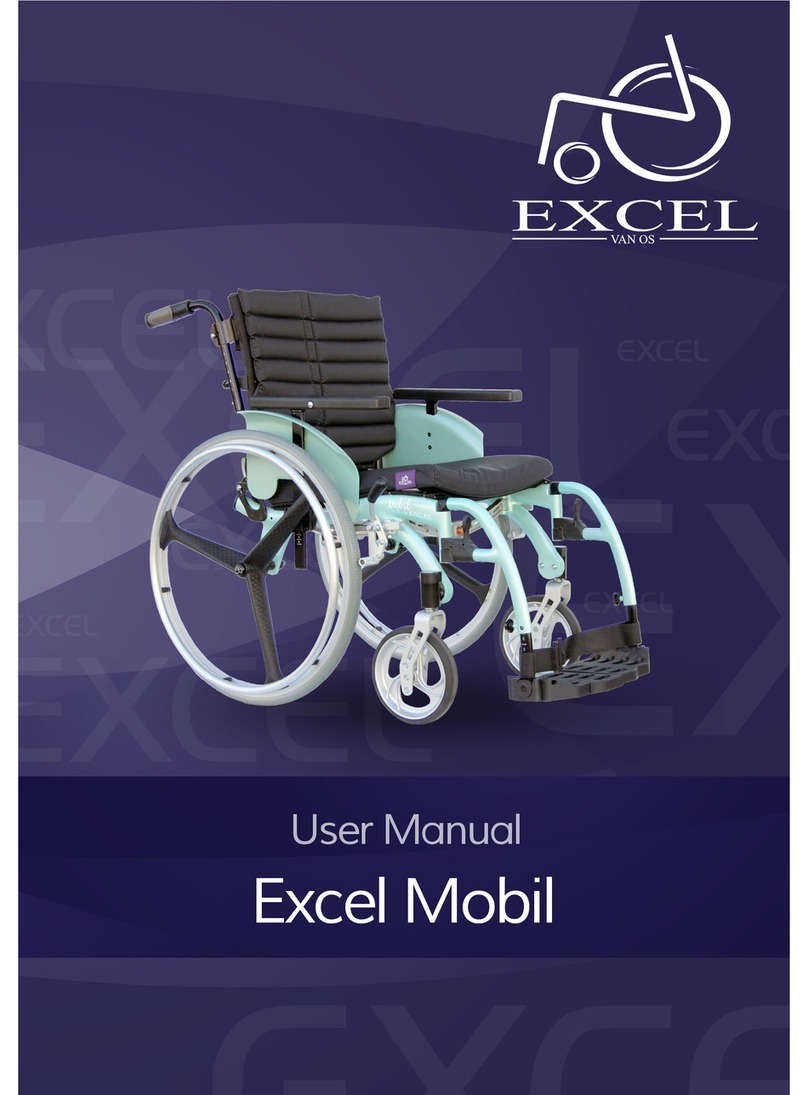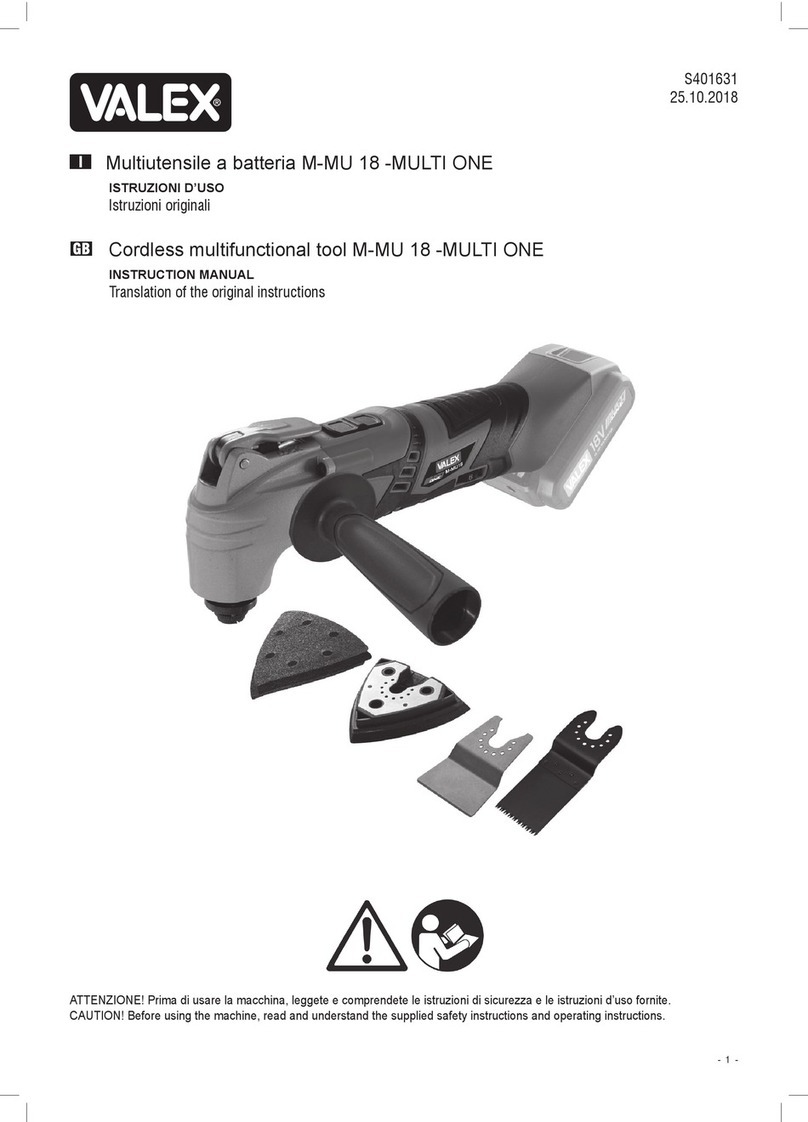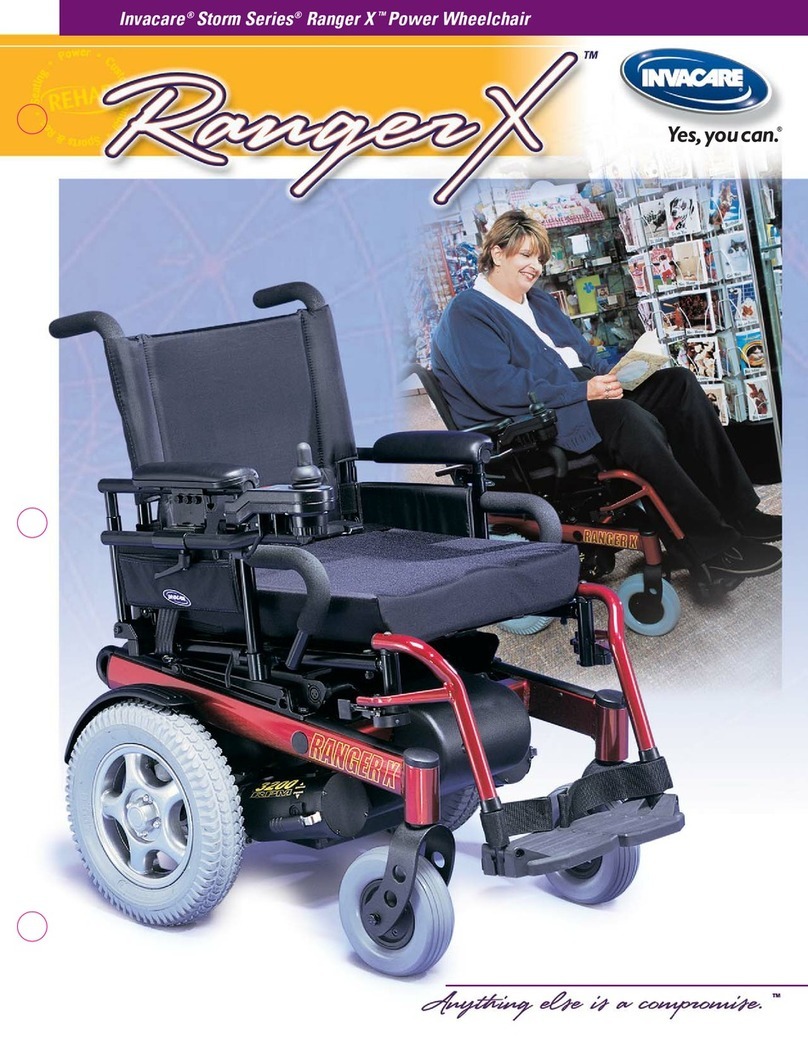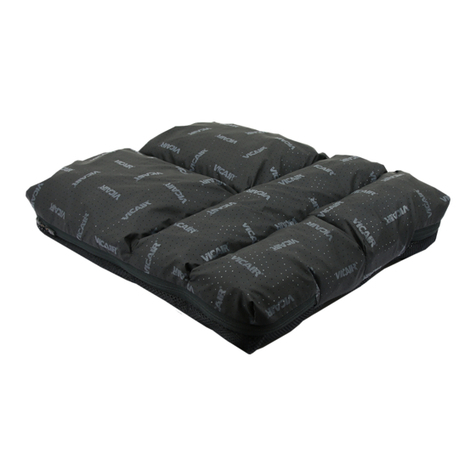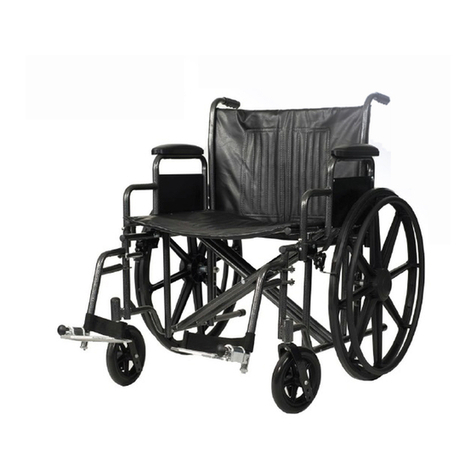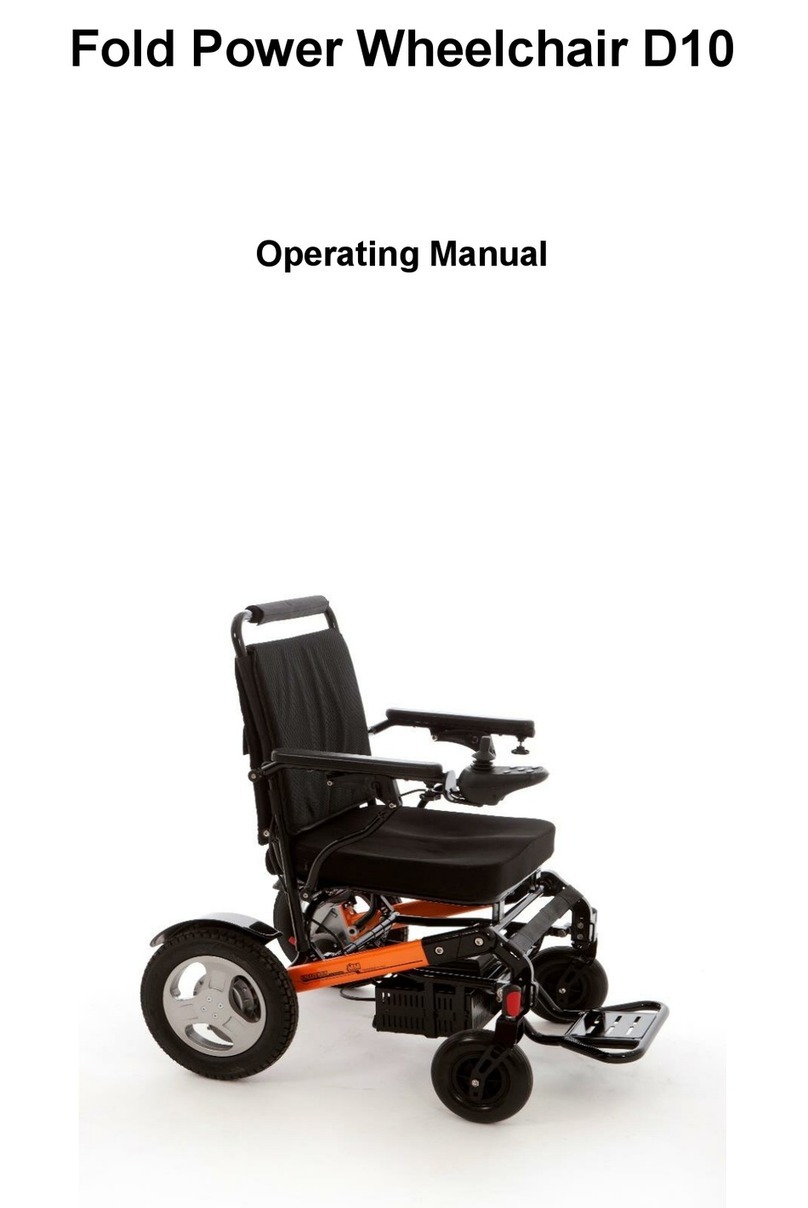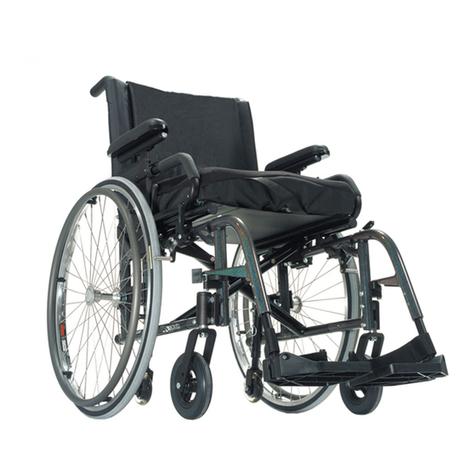
2. Safety Instructions
5
General Riding Cautions
- While using this wheelchair, keep your hands on the hand rims to
properly control the wheelchair.
- To avoid injury, first practice using this wheelchair in a safe and open
environment, such as a park. Practice moving forward, backward,
stopping, and turning. As you gain skill and become comfortable with
the controls, you can begin to use this wheelchair in other suitable
environments.
- Before riding on any roads, be sure to have a caregiver with you and
be sure to always ride safely.
- Please follow all pedestrian traffic rules, the wheelchair is not
considered an automobile.
- Please ride on the sidewalk and the zebra crossings only. Do not
ride on vehicle lanes.
- Ride at steady speeds and avoid sharp turns or zig zagging.
- If provided, please fasten the seat belt while in use.
- Solid rubber tires need minimal maintenance but should be cleaned
occasionally with a damp cloth. Replace tires if they become severely
worn or cracked.
Avoid Riding in These Conditions Unless Accompanied by a
Caretaker
- Riding in inclement weather such as rain, heavy fog, strong winds,
snow, etc. If your wheelchair gets wet, some functions may be dam-
aged so please wipe off all water immediately.
- Riding in sub optimal conditions such as muddy areas, trails, sand,
gravel, etc.
- Riding in crowded areas, riding on unfenced roads, near ditches,
near bodies of water, or near any other dangerous areas.
- Riding over railroad tracks. If you must cross a railroad track, inspect
the tracks to confirm it is safe to cross. Cross at an angle that ensures
your tires will not get stuck in the track.
- Carrying people or cargo. This wheelchair is designed to be used by
only one person. It is not designed to carry additional people or cargo.












